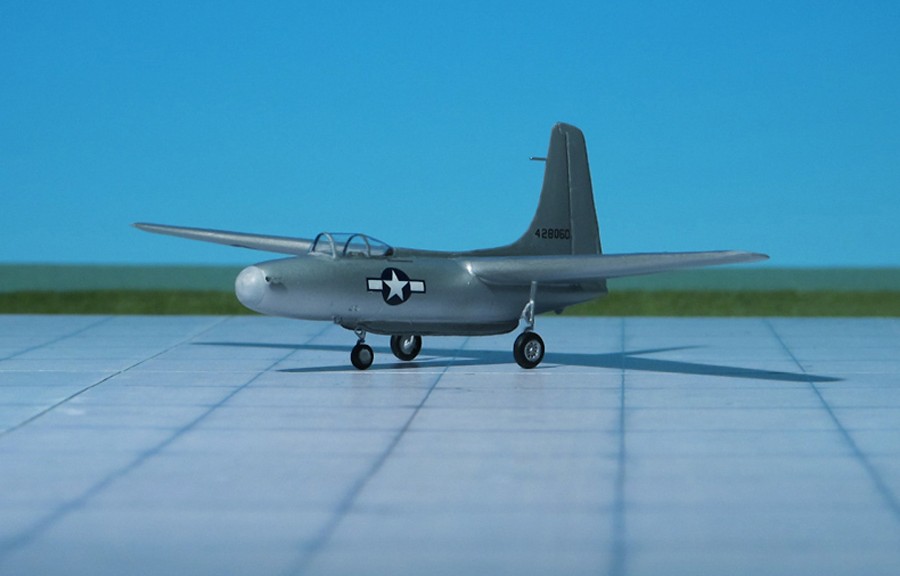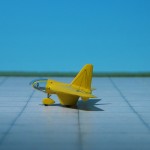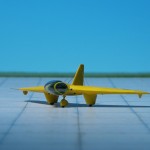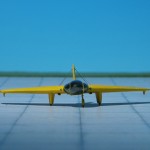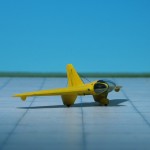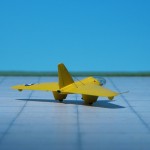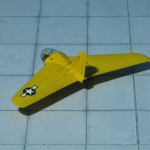TYPE: Fuel transporting towed glider
ACCOMMODATION: Pilot only
POWER PLANT: None
PERFORMANCE: 250 mph
COMMENT: The Cornelius XFG-1 was a military fuel transporting towed glider, without a tail plane and with a forward-swept wing. Its designation “FG” stood for fuel glider and its role was as a fuel transport. It was to be towed behind another aircraft rather like contemporary troop carrying gliders, but its two fuselage tanks held 677 US gal of aviation gasoline. Unlike other troop carrying gliders like the Waco CG-4A Hadrian, the XFG-1 could be towed by bombers or transports at a cruise speed of 250 mph. Proposals seem to have included a piloted tow version behind a large transport, the glider landing loaded on skids having jettisoned its wheels after take-off; or a pilotless version towed behind a B-29 bomber, disconnected and abandoned after fuel transfer was completed; the intent of the scheme being for the glider to act, essentially, as a giant, winged drop tank for extending the range of the towing aircraft. The XFG-1 was a high-wing monoplane, its wing set far back towards its vertical stabilizer. The wing was quite high aspect ratio and of modest forward sweep. Though the earlier Cornelius aircraft had wings that had their incidence variable in the air, the incidence on the XFG-1 could only be adjusted on the ground, with two settings of 3˚ and 7˚. There was no horizontal tail. It had a simple fixed tricycle undercarriage and a conventional single seat cockpit; two examples of the type were built for test purposes only (Ref.: 24).
